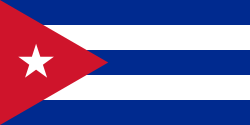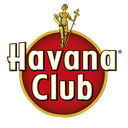Executive Secretary

IX International Symposium on Chemistry and Pharmaceutical Sciences
SIQF 2025
9th Symposium “Design, production and development of drugs” and 4th International Symposium “Chemistry of natural products”
Problem: Metabolic diseases associated with oxidative stress are a growing health concern.
Objectives: To determine the concentration of total polyphenols in the most consumed vegetables and fruits in Santa Clara.
Methodology: A survey of 150 individuals from CMF 18-11 was conducted to identify the most consumed foods. Samples were analyzed using the Folin-Ciocalteu method.
Results and discussion: The most consumed vegetable was chard (28.0%) and the most consumed fruit was banana (26.0%). The highest polyphenol concentration was found in carrot (30.26 mg/100g) among vegetables and in banana (3.22 mg/100g) among fruits. Vegetables showed higher concentration than fruits (p<0.05).
Conclusions: There is a mismatch between the most consumed foods and those with the highest polyphenol content. Consumption of carrot and cabbage is recommended due to their high antioxidant potential.
Problemática: Las enfermedades metabólicas asociadas al estrés oxidativo representan un problema de salud creciente.
Objetivos: Determinar la concentración de polifenoles totales en los vegetales y frutas más consumidos por la población de Santa Clara.
Metodología: Se realizó una encuesta a 150 individuos del CMF 18-11 para identificar los alimentos de mayor consumo. Se analizaron muestras mediante el método de Folin-Ciocalteu.
Resultados y discusión: El vegetal más consumido fue la acelga (28.0%) y la fruta más consumida fue el plátano (26.0%). La mayor concentración de polifenoles se encontró en la zanahoria (30.26 mg/100g) entre los vegetales y en el plátano (3.22 mg/100g) entre las frutas. Los vegetales presentaron mayor concentración que las frutas (p<0.05).
Conclusiones: Existe una discordancia entre los alimentos más consumidos y aquellos con mayor contenido de polifenoles. Se recomienda promover el consumo de zanahoria y col por su alto potencial antioxidante.
About The Speaker

Dra. Eliany de la Caridad Guevara Pérez

Discussion


 Gold
Gold
 Gold
Gold
 Silver
Silver
 Silver
Silver